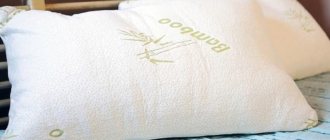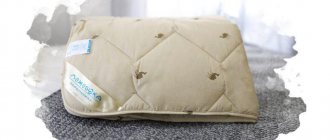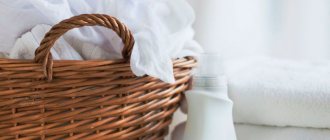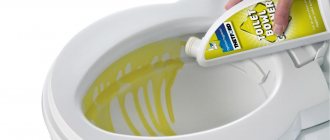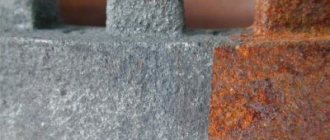Sleep is an invariable part of our life, making up about a third of it. Adequate sleep certainly has a beneficial effect on a person. In order to make it so, you need to choose the right bedding, especially a pillow. If it is easy to use, it means your sleep will be restful and long. Currently, this product is available on the market in a huge range: with natural and synthetic filler. Today we will talk about a camel hair pillow. Consumer reviews about it, as well as its sizes, pros and cons are given below.
Myths about camel hair pillows
There are several myths about products made from this filler; we will take the liberty to refute them.
- Smell: Pillows filled with camel hair have an unpleasant smell. This is not true. Wool does have an aroma - slightly sweet, but with proper processing it disappears, so a high-quality product has no odor.
- Thermal conductivity. According to reviews, a camel hair pillow is indeed very warm, but this warmth is dry. All the moisture of this wool is absorbed into the fibers, and the pillow itself is always dry.
- Taunting. Another myth concerns the fact that the pillow is supposedly prickly. Perhaps camel wool is indeed a little prickly, but with high-quality processing of raw materials and a good bedstead, it is impossible to get itching and burning during sleep.
What you should pay attention to when choosing
When choosing a product made from camel hair, you should consider:
- A pillow that is 100% wool will quickly lose its shape and roll up. In just six months it will have to be replaced.
- Pay attention to the manufacturer. Well-known brands are distinguished by impeccable finishing.
- The design of the product is considered an important parameter. To purchase a rational model, you should choose a pillow from 2 sections. In one part, natural camel hair is used as a filler, in the second - artificial material.
- It is important to choose the right cover fabric. You should not give preference to synthetics. It eliminates all the benefits of the filler. A cover made of artificial materials will not allow air to pass through.
Pros and cons of camel hair pillows
It should be noted that there are no contraindications to the use of pillows. People with asthma and allergy sufferers should be careful when using pillows with this composition. Those suffering from rheumatism, arthritis and arthrosis, radiculitis, nervous system disorders and respiratory diseases need to have such a pillow. Like all products, camel hair pillows have their pros and cons.
Customer Reviews
Many users note the lightness and elasticity of such a pillow and claim that after purchasing it they get sick less often or say goodbye to old “sores” forever.
However, people who suffer from excessive sweating during sleep are the most happy about a pillow made of camel hair.
Buyers are happy to share their positive impressions, listing the already known advantages of the purchased products:
- the pillow “breathes”, excellent ventilation and thermoregulation;
- retains its original shape without leaving dents or “memory”;
- convenient and comfortable for the human body and anatomy;
- pleasant to the touch pillowcase-cover;
- the seams are securely stitched;
- elastic, and in cold weather, until the heating is turned on, warm.
Among the minuses, there are restrictions from the manufacturer on care (most often only dry cleaning is recommended!)
pros
The advantages include the following properties:
- High thermoregulation. The habitat of camels is the desert, and in it, as is known, temperature changes range from -45 °C to +50 °C. That is why camel wool has thermoregulating properties.
- Hygroscopicity. Camel hairs have a scaly structure. They absorb up to 35% of moisture relative to their weight, and the water evaporates easily. According to reviews, a camel hair pillow always remains dry.
- Ease. At first glance, camel hair may seem coarse and heavy. But in terms of lightness and softness it is comparable to bird down. Sheep wool, similar in properties to camel wool, is twice as heavy.
- Breathability. Thanks to the scaly and hollow inside structure of the camel cover, products made from it are provided with good air exchange.
- Antistatic.
- Healing properties. Each hair of camel wool is covered with animal wax lanolin, which gives medicinal properties to products made from camel wool.
Comparative characteristics of natural and synthetic fillings for pillows
In addition to camel wool, there are many other alternative fillers. All of them are divided into 2 groups - natural and synthetic. Natural fibers include down, wool, feathers, and plant fibers, while synthetic fibers include various combinations of polyester and polyamide fibers. Which variety is better? Before buying a pillow, it is worth studying the features of each of these materials.
| Filler type | Name | Advantages | Flaws |
| Natural | Bamboo | Hypoallergenic, breathable, environmentally friendly, easy to care for, antibacterial | Short service life (up to 4 years), low hygroscopicity |
| Cotton | Environmental friendliness, good air exchange, hygroscopicity, | Difficult to care for, prone to dampness | |
| Silk | Hypoallergenic, elastic, antistatic, durable, antibacterial | High price | |
| Linen | Hypoallergenic properties, good air and moisture exchange | Risk of microbial growth | |
| Wool | Hygroscopicity, good air and heat exchange, medicinal properties, self-cleaning ability | Allergenic, difficult to care for, prone to pilling, risk of microorganism proliferation, high price | |
| Swan down, bird feather | Softness, breathability, hygroscopicity, good heat transfer, rapid shape recovery, long service life | Allergenicity, risk of mites, absorption of odors, high cost, sometimes parts of feathers come out of the quilt | |
| Latex | Antibacterial, hypoallergenic, orthopedic properties, easy to care for, long service life | Low hygroscopicity, high cost | |
| Buckwheat husk | Environmental friendliness, antibacterial and orthopedic properties, hypoallergenic, breathable, providing acupressure | Rigidity, specific rustling, large mass, difficult to care for, poor thermoregulation | |
| Seaweed | Hypoallergenic, hygienic, breathable, hygroscopic, therapeutic aromatherapy, antistatic | Difficult to care for, excessive softness | |
| Needles | Healing and antibacterial properties, air exchange, long service life | Rigidity | |
| Synthetic | Holofiber, comforter | They allow air and moisture to pass through well, are hypoallergenic, and light in weight. | During prolonged use, the filler becomes deformed |
| Sintepon | Hygroscopicity, breathability, antibacteriality | Collapses into clumps, short-lived | |
| Sintepooh | Lightness, air exchange, antibacterial, affordable price | Loses its shape quickly and does not absorb moisture well | |
| Silicone | Antibacterial, head support, hypoallergenic, thermoregulation | Accumulates static electricity | |
| Memory foam | Hypoallergenic, hygienic, easy to care for, orthopedic properties | High cost, poor air exchange |
When choosing a pillow, you should take into account the individual characteristics of a person. If you have problems with the spine, you should give preference to orthopedic models.
For relaxation, you can purchase a pillow with swan down, seaweed or buckwheat husk. Allergy sufferers should avoid products with animal fillers and choose a product made from bamboo or synthetic material.
What is better than sheep's wool and bamboo?
The main “competitors” of camel wool fillers are considered to be materials such as sheep wool and bamboo. However, even over these natural materials, camel down has undoubted advantages. Both bamboo and wool fillings absorb moisture fairly quickly. The structural features of animal fluff allow this moisture to evaporate later, but cellulose does not have this property. Bamboo pillows get wet quickly and take a very long time to dry.
In addition, the bamboo fibers inside the pillow can become deformed, leading to a gradual loss of volume. It is impossible to restore the integrity of the bamboo filler, while woolen filler just needs to be fluffed so that the pillow becomes fluffy and soft again. As for the comparison of camel and sheep wool, they are very similar in their qualities, but the first is much lighter, warmer and stronger.
Camel and sheep wool - comparison
Sheep wool has a coarser texture. This is due to the structural features of the fibers. Therefore, the material may cause irritation to sensitive people. At the same time, sheep meat also has certain advantages. It is characterized by a larger volume. This is also due to the rough structure of the material.
It should be taken into account that camel wool does not cause a concentration of static electricity. It provides protection from the negative effects of electromagnetic radiation.
Since camel hair has soft fibers, this pillow will be less fluffy. In addition, the product will flatten faster. At the same time, in terms of thermal conductivity, camel wool is significantly superior to sheep wool. In addition, it ensures air circulation.
Minuses
Among the minuses, the following qualities should be noted:
- Allergenicity. Allergies can be caused by lanolin, which is found in camel wool, as well as chemicals used to treat the pillow. In addition, the main ingredient of wool is the protein keratin, which serves as a breeding ground for various microorganisms. In turn, their waste products can cause allergies.
- Difficult to care for. The purchased pillow must be ventilated in the fresh air for several hours, while avoiding exposure to the sun. A similar procedure must be carried out every year, combined with local cleaning of the product. The pillow can only be washed by hand.
- Poor support. Due to the fact that the pillow is quite soft, it is not suitable for sleeping for people with neck pain, as it will not be able to support it in the correct position.
- Short service life. It is relatively small - from 3 to 5 years, it depends on the filler - down or synthetics. If not properly cared for, the fur itself can become matted.
- Price. Another disadvantage of blankets and pillows made of camel wool is the high price. A quality product cannot be cheap. Some unscrupulous manufacturers, in order to reduce costs, reduce the amount of natural wool in the manufacture of goods. Ultimately, there is a possibility of buying a synthetic product.
Sleeping accessory with unique properties
Camel hair is usually obtained from the two-humped “ships of the desert” Bactrians - the largest representatives of their family, also distinguished by the thickest coat. The main feature of this camel is its two humps, which are the main “suppliers” of wool.
Camels are bred in many countries, but the most valuable wool is considered to be that produced by Mongolian Bactrians.
Features and properties of the filler
Camel wool is considered a natural material that includes lanolin. This component resembles sebum in composition. When in contact with the body, it is able to produce a softening effect and improve the condition of the skin.
In addition, the material allows air to pass through and absorbs moisture. Another feature of such pillows is considered to be reliable protection against electromagnetic radiation.
Pros and cons for pillows
Before purchasing, the benefits and harms should be analyzed in advance. Such models have many advantages:
- They repel dust and dirt, and also form a barrier that provides protection from electromagnetic fields. The products help neutralize the effects of static materials and electricity.
- They absorb moisture and evaporate it easily. Thanks to this, it is possible to get rid of sweat that appears during sleep.
- They retain their performance characteristics for a long time. With proper use, the product will be durable.
- Lanolin present in the material helps to avoid the development of pathogens that pose a danger to humans.
- Lets air through. Thanks to this, the pillows keep you cool in the summer and warm in the winter.
Pillows are considered beneficial for people's health. Thanks to their use, the following results can be achieved:
- Soften mucous membranes. Such materials prevent pathogenic bacteria from entering the body.
- Expand blood vessels and capillaries. This improves blood circulation. In addition, soft tissues and muscles can receive more oxygen. Due to this, it is possible to improve the condition of the skin - give it a beautiful shade and minimize the likelihood of wrinkles.
- Remove toxic substances from the body that accumulate during the day.
- Get rid of systematic headaches and constant fatigue.
In addition, camel filler helps eliminate pain in the spine. It helps to cope with discomfort that occurs in joints and muscles.
At the same time, camel pillows also have disadvantages:
- If the rules of care are violated, the hair immediately falls off.
- Dust mites can accumulate inside the down, causing allergies.
- Such products have a high price.
Advantages of camel pillows
It has long been known that products made from sheep and camel wool, be it blankets, pillows or clothing, have a beneficial effect on the human body. This is explained by the special structure and properties of natural fiber, which has many advantages.
- Good thermoregulation. It is cool to sleep on a camel wool pillow in the summer and warm in the winter, because it has excellent thermoregulation. In nature, this property of fibers helps camels survive in the desert, where the air temperature can change dramatically during the day.
- High hygroscopicity. Products with wool filling easily absorb moisture and dry quickly. This occurs due to the fact that the hollow fiber does not have a scaly structure.
- Breathability. Thanks to the voids inside the fiber, wool easily allows air to pass through. A pillow with such filling has excellent air exchange - simply put, it “breathes”.
- Antistatic. Camel hair does not accumulate electrical charge, so it does not attract small debris and dust. In those homes where there are many devices that create an electromagnetic field, you should use bedding made from this natural material.
- Medicinal properties. Inside each villi there is a cavity filled with animal wax lanolin. From the heat emitted by the human body, this healing substance softens, penetrates the skin and heals muscles and joints, neutralizes toxins, increases blood circulation, and rejuvenates the skin.
- Resistant to stains. Thanks to lanolin, which impregnates the fibers, the wool filling not only becomes dirty with difficulty, but also cleans itself. Therefore, products made from camel wool are practical and durable.
Easy breath
Even after washing, camel wool retains lanolin - a natural wax, but not beeswax, but produced by the animal itself. This component softens the respiratory tract and has an antiseptic effect.
Thermoregulation
Camel wool improves thermoregulation. In warm weather the pillow is not hot, but in cold weather it is warm.
Antistatic
Camel wool does not accumulate static, which means it does not attract dust, easily absorbs moisture and dries quickly.
Healing properties
Camel hair is believed to have health benefits such as relieving muscle pain and pain in the joints and spine. It is recommended for the prevention of ENT diseases and diseases of the genitourinary system.
Does camel hair have any disadvantages?
The main disadvantage of camel wool filler, which is present in any animal raw material, is its high allergenicity. This is due to the content of lanolin and keratin in Bactrian pile, as well as the chemicals used to process the filler. Keratin serves as a breeding ground for pathogenic microorganisms, whose waste products can cause allergies.
Other disadvantages of products with camel filler include high price, difficulty in maintenance, and short service life (up to 5 years). In addition, a pillow with camel hair is not orthopedic, because it does not support the head well, it is too soft. People suffering from neck pain are not recommended to sleep on such a product.
Allergenicity
Like any other, camel hair is allergenic. Hairs are made of keratin, which is readily eaten by numerous parasites. Their waste products can also cause allergic reactions. And allergies to beneficial lanolin also occur.
Insufficient support
The pillow cannot be called orthopedic; it does not hold its shape, which means it is not suitable for people with spinal diseases.
Loss of elasticity
Wool tends to mat and it is almost impossible to untangle it later.
Difficult care
A wool pillow must be aired in the shade for several hours before use. During operation, ventilation is repeated at least once a year.
How to choose?
If you want to purchase a product with a longer service life and experience all the benefits of camel wool, you should buy a two-piece pillow. This pillow consists of a wool cover and down or synthetic filling.
Before buying a product, be sure to carefully read the information on the label: the composition should indicate “camel hair – 100%”. If the label simply states “camel hair,” this means that the manufacturer is hiding the percentage of natural raw materials. This product uses thermally bonded filler. The label must also contain information about the manufacturer, what is used as a filler, the fabric of the cover and proper care of the product.
Sheep wool against fluff and feathers
When talking about sleeping pillows, people most often think of a filling made from feathers and down, taken in different proportions. But if we compare the two types of products, we can say with confidence that the down and feather filling holds its shape better. Whereas camel wool, due to its thinness and delicacy of hairs, flattens quite intensively. And this may not seem comfortable for people suffering from deformities and pain in the neck, as well as migraines.
If you suffer from neck or musculoskeletal problems, then most likely these pillows are not suitable for you.
Camel hair pillows: reviews
According to consumer reviews, such pillows are easy to use, hypoallergenic, fairly elastic, and of high quality. Products made from camel wool have the following properties: antibacterial, environmentally friendly, hygroscopic, heat transfer. The product is sold in a convenient, beautiful packaging with handles. The cover is made of cotton, the fabric is quilted. In winter, it is warm to sleep on such a pillow, but in summer, even in the hottest weather, it is not hot. Due to the fact that the filling contains polyester fiber, the pillow holds its shape well. The size of the pillows can be chosen at your discretion.
How long will it last?
With proper care, bedding made from Bactrian wool lasts at least five years. To ensure that this period does not shorten, but increases, it is necessary to dry the pillow once every four to five months in a ventilated area on a sunny day. Harmful microorganisms may develop in natural wool during use. Such care will allow for high-quality disinfection of the product without the use of chemicals.
At home, the pillow is washed by hand twice a year. The water temperature should not exceed 30 C, since in boiling water the structure of the wool fibers is disrupted and the filler “falls off”. Chemical and dry reading of products is allowed.
The obvious disadvantages of products made from Bactrian wool include their high cost. But when it comes to a pillow that will provide a comfortable night's rest for more than 5 years, saving is not appropriate.
Washing and care
Even if the pillow additionally contains down or feather, it can be washed in a washing machine, the main thing is to follow some rules:
- washing temperature - 30° C;
- you should choose the “Wool” or “Delicate Wash” or “Hand Wash” modes
- it is necessary to use special liquid detergents for washing woolen products;
- Do not tumble dry.
After washing, be sure to dry the pillow by laying it flat.
Filler manufacturing process
Camels have a heterogeneous coat of fur. The first has coarse hairs with a density of 25 to 100 microns. The inner one is soft, resembles fluff – 17-21 microns.
It is obtained for the manufacture of bedding from 2 types of animals:
- Bactrians (Bactrians), living in Central and East Asia;
- one-humped (dromedaries) living in Western Asia and the African region.
The softest, thickest, warmest wool is that of Bactrians, which live in China, Kazakhstan and Mongolia. There are harsh winters and dry summers. The quality of the animals' wool is high. They have to withstand temperature changes. Up to 10 kg is collected from one individual. The inner or down is most valued for its softness and high thermal insulation properties. Dromedaries produce little wool - no more than 4 kg.
At the first stage, the animals are sheared, the wool is collected into bales, pressed to form blocks, and sent to production. They start with disinfection and cleaning.
Important! Camel wool contains lanolin. This special fat prevents the appearance of pathogenic organisms. Has a positive effect on the final consumer properties of the product.
The next step is combing the wool and laying it in loose rollers. In the sewing workshop, fragments are cut into suitable sizes and rolled into fabric.
At the last stage, seamstresses make quilted fabric from semi-finished products. All these processes are carried out in semi-automatic mode.
Teak (100% cotton) with a density of at least 140 g/m2 is usually used as a filler for blankets. Silk and satin can be used for pillows.
Features of choice
When choosing, in addition to the filler and size, it is necessary to take into account the degree of rigidity and height. And also the following factors:
- age;
- gender;
- shoulder width (If the shoulder length is up to 15 cm, then the height should be 10 cm; if from 15 to 20 cm, then the height of the product is 12 cm; if more than 20 cm, then 14 cm).
Your favorite sleeping position is also important:
- height 8-10 cm is suitable for sleeping on your back;
- 10-13 cm – on the side;
- 6-8 cm for sleeping on your stomach.
There is also a general rule: the softer the mattress, the lower the pillow.
Popular manufacturers, prices
Pillows with camel hair are adequately represented in the assortment of leading home textile brands:
- Dargez – textile association “Dargez” – production of high-quality bedding and home textiles;
- Verossa (Verossa) - a trademark of the NordTex corporation - a full cycle of textile production from cotton spinning to the finished product;
- Alvitek – – production and wholesale of home textiles and bedding, its own network of retail stores, all products are certified;
- Ecotex – trade and production – domestic manufacturer of home textiles, on the Russian textile market for more than 17 years;
- Togas is the Togas group of companies, an international company with Greek roots and a hundred-year history of success in luxury products made from the highest class fabrics and materials.
Also on sale you can find products from the companies Stolitsa Tekstilya, TK Elf, Podushkino, Sova & Javoronok, TekStil, OL-Tex, Classic by T and others.
The price category of the pillow depends on:
- from size: 40×60; 60×60; 50×70; 70×70 cm;
- from the cover material: cotton teak, percale, microfiber, synthetic satin, polysatin, silk;
- depending on the type of camel filling: down is much more expensive than wool.
- from additional filler: siliconized fiber, buckwheat husk, swan's down.
Also, its weight depends on the size of the pillow: from 0.45 kg (50x50 cm), 0.6 kg (60x60; 50x68 cm) to 1-1.5 kg (68x68 cm).
Price range - from 340 rubles (wool/siliconized fiber/synthetic satin) to 7990 rubles (wool/silk, down/cotton jacquard).
The most affordable prices, interesting combinations of fillers and cover fabrics, choice of product sizes - from. The Togas brand has the most luxurious combinations of natural fabrics and fillings, and, as a result, the highest pricing policy.
Video: Camel wool pillow “Etude” from the manufacturer Aelita (Russia, Ivanovo)
Here's what the formula for the cost of products in popular sizes looks like: external filler material + internal filler material + cover fabric = cost
Which blanket is better, camel or sheep?
Podpof is also used for production. Therefore, unlike sheep's, you warm up much faster under camel's.
For the same reason, a camel blanket is much lighter than a sheep blanket. The weight of the first product is 2 times less than the second. The next advantage of camel wool is moisture resistance, that is, under it a person will never wake up in sweat, even if it is warm outside, there is no risk of overheating.
Sheep wool is coarser, so with constant contact it can have an irritating effect, especially if the blanket or blanket has an open structure.
Author:
Zakharova Nina Afanasyevna
I hope you like my article! If you find any shortcomings, just write to me about it! I am always ready for a conversation and will answer any questions you have, ask them!
